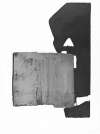Max
Liebermann
Max Liebermann, a leading figure in the German Impressionist movement, is renowned for his depictions of everyday life infused with a luminous sense of realism. If you’re looking for original Max Liebermann prints and editions for sale or would like to sell, request a complimentary valuation and browse our network’s most in-demand works.
Max Liebermann art for sale
Discover Max Liebermann prints for sale, exclusively available through our private network of collectors. Explore signed and unsigned screenprints, lithographs, digital prints, and rare editioned proof prints by era-defining blue chip artists.
Sell Your Art
with Us
with Us
Join Our Network of Collectors. Buy, Sell and Track Demand
Biography
Born into an affluent Jewish family in Berlin on July 20, 1847, Liebermann displayed an early affinity for art which was nurtured through his education. Despite initial resistance from his conservative father, he embarked on formal art studies, attending the Weimar Art School where he honed his skills and embraced the plein-air method, painting directly from life. This experience was instrumental in shaping his naturalistic style, and his early works already hinted at the sense of light and movement that would define his later Impressionist pieces.
Liebermann travelled extensively through Europe, with prolonged stays in the Netherlands and France, where he was influenced by the works of Jozef Israëls and the French Impressionists, respectively. His exposure to these artists instigated a shift in his palette to lighter colours and a looser brushwork, leading to the creation of works that captured the qualities of light and atmosphere.
Throughout his career, Liebermann's development was marked by distinct periods, each characterised by a deepening of his Impressionist techniques and an increasing focus on the portrayal of the working class, as seen in his series of Dutch weavers and German farm labourers. His celebrated painting, The Bleaching Ground, exemplifies his mastery of capturing the effects of sunlight on textiles and figures in open air.
Liebermann's impact extended beyond his canvases as a founding member and later president of the Berlin Secession, an influential group that promoted modern art and broke away from the conservative art establishment. His leadership and advocacy for progressive art significantly contributed to the transformative art culture in Germany.
In the 1920s, Liebermann was appointed as the honorary president of the Prussian Academy of Arts, but the rise of the Nazi regime led to his forced resignation due to his Jewish heritage. Despite these challenges, he continued to paint until his death in 1935, creating some of his most intimate and reflective works during this period, such as his garden scenes. His contributions to modern art have since been recognised, and his works continue to be exhibited worldwide, reaffirming his place as a master of Impressionism.

























